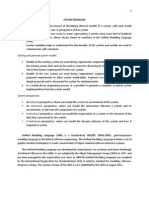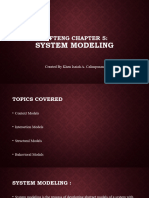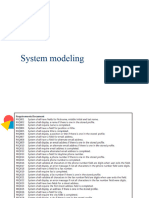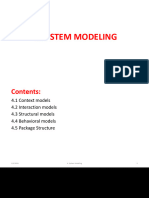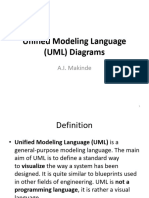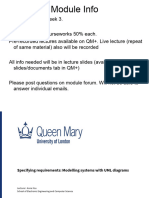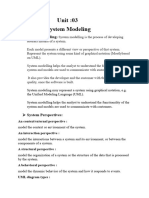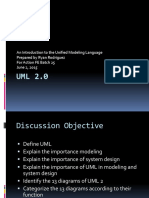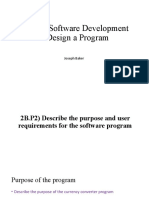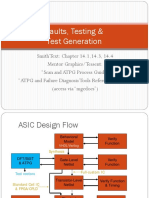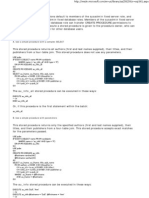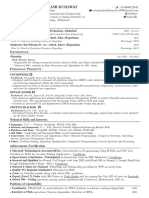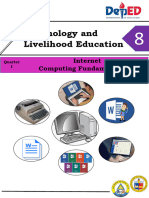0% found this document useful (0 votes)
17 views9 pagesL5 - System Modelling
- System modeling is useful for complex problems to document requirements and help both developers and users understand the system. It provides different perspectives through diagrams.
- Key perspectives include external (environment interactions), interaction (between components), structural (how the system is built), and behavioral (how components work together).
- Common model types are context models, process models, interaction models like use case and sequence diagrams, structural class diagrams, and behavioral state machine and data/event driven models. These help define and communicate how a system will be implemented.
Uploaded by
onareddakataCopyright
© © All Rights Reserved
We take content rights seriously. If you suspect this is your content, claim it here.
Available Formats
Download as PDF, TXT or read online on Scribd
0% found this document useful (0 votes)
17 views9 pagesL5 - System Modelling
- System modeling is useful for complex problems to document requirements and help both developers and users understand the system. It provides different perspectives through diagrams.
- Key perspectives include external (environment interactions), interaction (between components), structural (how the system is built), and behavioral (how components work together).
- Common model types are context models, process models, interaction models like use case and sequence diagrams, structural class diagrams, and behavioral state machine and data/event driven models. These help define and communicate how a system will be implemented.
Uploaded by
onareddakataCopyright
© © All Rights Reserved
We take content rights seriously. If you suspect this is your content, claim it here.
Available Formats
Download as PDF, TXT or read online on Scribd
/ 9

